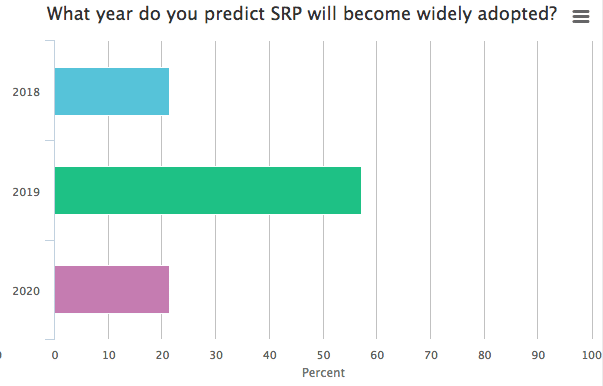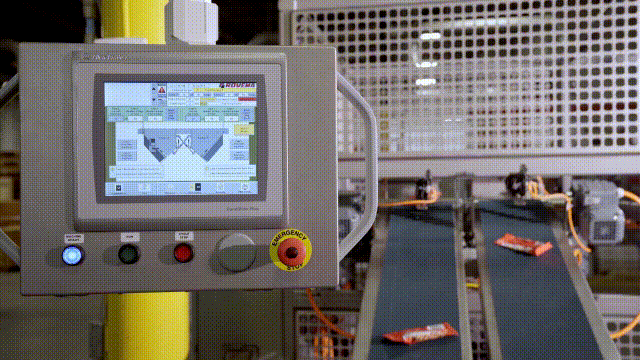The Secret Ingredient for Long Term VFFS Machine Reliability
For most of us, when we decide to make a purchase, the interaction with the team that designed and produced it is short-lived. When we go to buy...
3 min read
 Emily Brogan
:
Fri, Mar 15, 2024
Emily Brogan
:
Fri, Mar 15, 2024

 Grandiose Justifications and Over-the-top Language
Grandiose Justifications and Over-the-top LanguageIt's common in the capital equipment space to hear outlandish claims by sales reps and marketing departments. Simplistic financial justifications buried in mind numbing presentation decks are one example. Silly claims that adding or replacing a $500,000 machine in a 200,000 ft2 facility with millions of dollars of plant infrastructure will suddenly "change the industry" are not uncommon.
Talk to enough vendors and it's kind of amusing in aggregate. However, there are two resulting risks to manufacturers.
First, they grow so inured to marketing hyperbole that they simply discount even legitimate claims.
Second, they find so little substance in many sales discussions that they don't consider what may be legitimately strategic considerations.
Let's look at a couple examples.
The COVID-19 pandemic served as a valuable teacher for numerous companies, offering lessons that will undoubtedly enhance their business performance moving forward. Among the key insights gained, many organizations now understand the significance of maintaining a certain level of flexibility and resilience within their operations (be it in the supply chain, manufacturing, or logistics), rather than solely focusing on maximizing efficiency at all costs.
During the pandemic, as companies swiftly streamlined their product offerings, scaled back food service operations, and ramped up retail grocery production, they grappled with the repercussions of limited equipment adaptability and a lack of cross-training among staff. This lack of flexibility hindered their ability to ramp up production in response to fluctuating demands and made it challenging to reassign workers to different facilities as needed.
While there's value in specialization, and many companies provide latitude for local management to make choices based on local conditions, it became clear that flexibility was key, as was harmonization which would allow staff and facilities to meet fluctuating needs.
In the vertical form/fill/seal space we see this reflected frequently in the bag style "trade-off" for speed that companies often make. We believe that's short sighted. There's no reason that a machine can't manage a wide variety of bag styles and still run efficiently.
This is a great example of an area where engineering might be so weary of empty claims that they don't even engage marketing to explore potential future requirements - and assume vendors simply can't deliver. (Rovema's Flex Machine does exactly that - without empty promises!)
Another example is often found in areas of product market fit, consumer expectations and retailer requirements.
Brand managers often feel constrained by the capabilities that engineering and operations offer. Therefore they may be slow to react, much less suggest, innovative experiments.
So many companies appear to be reacting to efforts to improve sustainability rather than proactively bringing them to the market in concepts, pilots and tests. Similarly they often only deliver on retailer requests under competitive threat.
But a strong VFFS vendor can help to creatively address these requirements, and provide innovative ideas to challenges, like sustainability, which are commonly focuses of the C-Suite and boards.Rovema offers a number of technical features which substantially improve sustainability with packaging material reduction (gauge and in2), package rejects, and excess filling. We've also created remarkable systems to run both paper material and traditional coextruded films.
Further, systems with integrated design (single facility vs. single brand label) facilitate satisfying retail trends including shelf-ready packaging. It's a shame for marketing/merchandising/brand folks to hesitate to fully explore what might be reasonably attainable, because machine projects are considered from a very narrow, predefined scope.
When suppliers sound the same (and realistically most do) it's easy to assume that they are the same. While suppliers tend to focus on superficial technical distinctions, the core business drivers are sometimes harder to nail down.
But COVID-19 has illustrated the importance of that. Sales volume boosts the P&L topline, but it doesn't necessarily translate to the balance sheet - and the balance sheet is ultimately a good proxy for the suppliers' ability to endure tough times and still maintain extensive and expensive spare parts inventories, retain expensive veteran technical resources, and survive the likely bad debt losses they'll suffer.
You probably will never put your VFFS machine replacement roadmap on the agenda of your board of directors. We get that.
HOWEVER, there are many business issues (besides speed, weigh/fill accuracy, material cost and refurbishment) that a vertical bagger might touch on which are absolutely on your board meeting list of topics.
If you expand your discussion with vendors beyond specific technical specs for a funded project to share why it matters to strategy and priorities, you might well find that simple, inexpensive proactive design changes can provide flexibility that will bring favorable attention to both marketing and engineering decision makers, and drive better business outcomes.
We understand why many companies and engineering teams are skeptical. As an industry we've made a lot of questionable claims. But to simply skip the step of asking what's possible is to do your business a disservice.

For most of us, when we decide to make a purchase, the interaction with the team that designed and produced it is short-lived. When we go to buy...

1 min read
Editors Note: This blog was originally published in February of 2018 but has been edited and republished with additional content around this topic.

When evaluating capital equipment vendors, an often overlooked tool in your arsenal is performance guarantees. These assurances, provided by vendors,...